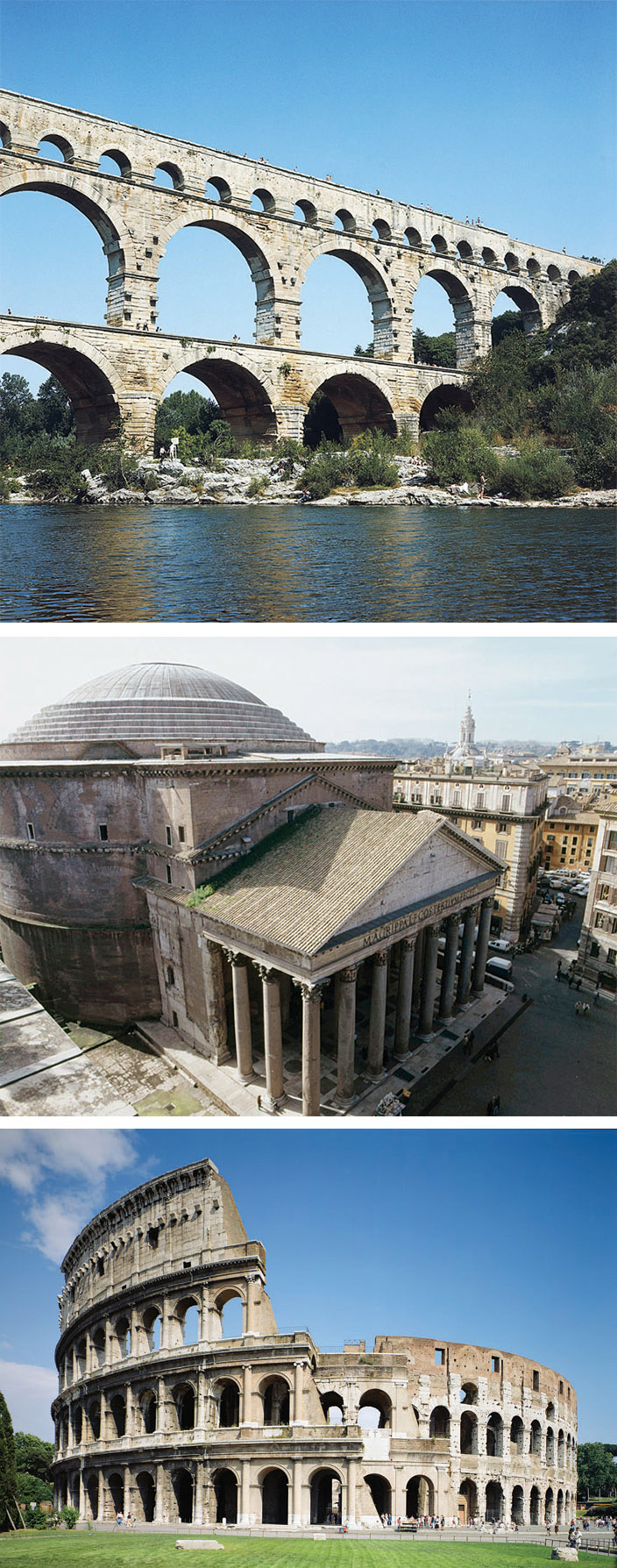Understanding World Societies:
Printed Page 160
> What was life like in Rome, and what was it like in the provinces?
IIn the late eighteenth century the English historian Edward Gibbon dubbed the stability and relative peace within the empire that Augustus created the pax Romana, the “Roman peace,” which he saw as lasting about two hundred years. During this time the growing city of Rome saw great improvements, and trade and production flourished in the provinces. Rome also expanded eastward and came into indirect contact with China.

Roman Architecture
These three structures demonstrate the beauty and utility of Roman architecture. The Coliseum in Rome (bottom), a sports arena that could seat fifty thousand spectators, built between 70 C.E. and 80 C.E., was the site of gladiatorial games, animal spectacles, and executions. The Pantheon in Rome (middle), a temple dedicated to all the gods, was built in its present form about 130 C.E., after earlier temples on the site had burned down. Its dome, 140 feet in diameter, remains the largest unreinforced concrete dome in the world. Romans also used concrete for more everyday purposes. The Pont du Gard at Nîmes in France (top) is a bridge over a river that carried an aqueduct supplying millions of gallons of water per day to the Roman city of Nîmes in Gaul; the water flowed in a channel at the very top. Although this bridge was built largely without mortar or concrete, many Roman aqueducts and bridges relied on concrete and sometimes iron rods for their strength. (Pont du Gard: © Vanni Archive/Art Resource, NY; Pantheon: Gianni Dagli Orti/The Art Archive at Art Resource, NY; Coliseum: Scala/Art Resource, NY)
These three structures demonstrate the beauty and utility of Roman architecture. The Coliseum in Rome (bottom), a sports arena that could seat fifty thousand spectators, built between 70 C.E. and 80 C.E., was the site of gladiatorial games, animal spectacles, and executions. The Pantheon in Rome (middle), a temple dedicated to all the gods, was built in its present form about 130 C.E., after earlier temples on the site had burned down. Its dome, 140 feet in diameter, remains the largest unreinforced concrete dome in the world. Romans also used concrete for more everyday purposes. The Pont du Gard at Nîmes in France (top) is a bridge over a river that carried an aqueduct supplying millions of gallons of water per day to the Roman city of Nîmes in Gaul; the water flowed in a channel at the very top. Although this bridge was built largely without mortar or concrete, many Roman aqueducts and bridges relied on concrete and sometimes iron rods for their strength. (Pont du Gard: © Vanni Archive/Art Resource, NY; Pantheon: Gianni Dagli Orti/The Art Archive at Art Resource, NY; Coliseum: Scala/Art Resource, NY)